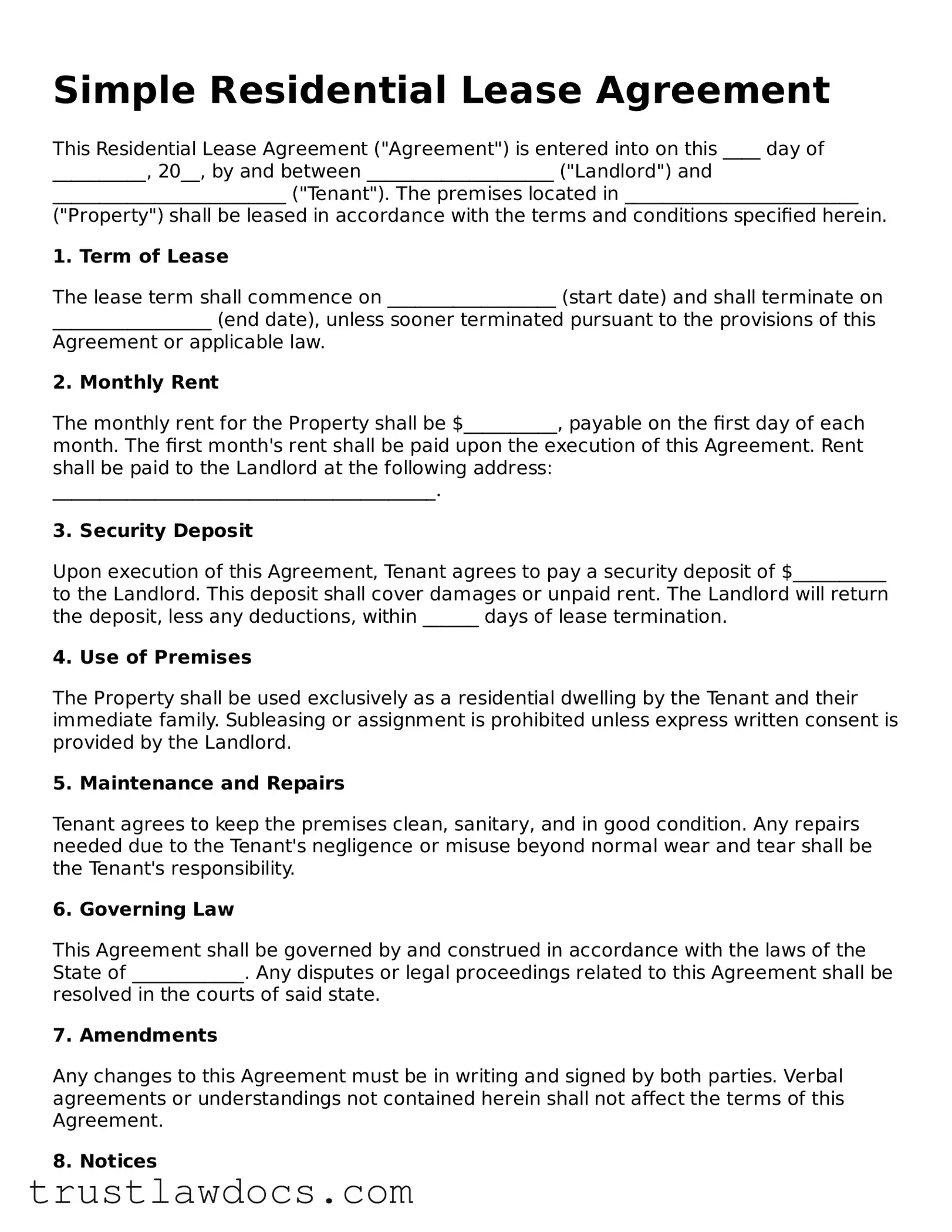What is a Residential Lease Agreement?
A Residential Lease Agreement is a legally binding document between a landlord and a tenant. It outlines the terms and conditions under which the tenant can rent a residential property from the landlord. This agreement covers details such as rent amount, security deposit, lease duration, and rules regarding pets, noise, and maintenance.
How long does a typical Residential Lease Agreement last?
Most Residential Lease Agreements are set for a fixed term, often ranging from one year to two years. However, some agreements may be for a shorter period, such as six months, or on a month-to-month basis, which allows either the landlord or the tenant to terminate the agreement with proper notice.
Is a security deposit always required?
While not always required by law, most landlords do require a security deposit as part of the lease agreement. This deposit is meant to cover any potential damages to the property or unpaid rent. The specifics of the deposit, including the amount and the conditions for its return, should be clearly stated in the lease agreement.
Can a tenant terminate a Residential Lease Agreement early?
Yes, a tenant can terminate a lease agreement early, but the conditions for doing so must be included in the agreement itself. Typically, the tenant may be required to pay an early termination fee or continue paying rent until a new tenant is found. It's important for tenants to review these conditions before signing the lease.
Are pets allowed in a rental property?
Whether pets are allowed in a rental property depends on the terms of the lease agreement. Some landlords may allow pets with certain restrictions regarding size, breed, or number of pets, and may require an additional pet deposit or fee. Always review the pet policy in the lease agreement if this is a concern.
What maintenance responsibilities does a tenant have?
Typically, tenants are responsible for keeping the property clean and paying for damages that occur due to their negligence. Some lease agreements may also require tenants to perform minor maintenance, such as changing light bulbs or smoke detector batteries. Major repairs, however, are generally the responsibility of the landlord. The lease agreement should clearly define these responsibilities.
What happens if rent is paid late?
Lease agreements often include a clause regarding late rent payments, specifying any late fees and the grace period before those fees are applied. It's critical for tenants to understand these terms to avoid unnecessary penalties. Continuously paying rent late may lead to legal actions, including eviction.
Can the landlord enter the rented property at any time?
No, landlords are typically required to provide notice before entering a rented property, except in the case of emergencies. The lease agreement should specify the conditions under which the landlord may enter the premises, including how much notice will be given.
How is a Residential Lease Agreement terminated?
A lease can be terminated at the end of the lease term by either party with proper notice, typically 30 days. It can also be terminated early under conditions outlined in the agreement, such as breach of the agreement by either party. Both parties may also mutually agree to terminate the lease early under certain conditions. The termination process should be outlined in the lease agreement to avoid any misunderstandings.
